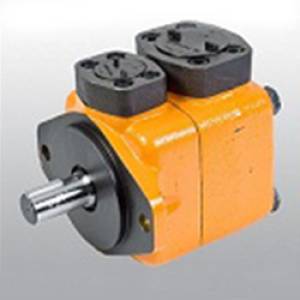Description
Vane Pumps: High-Performance Fluid Transfer Solutions
Vane pumps are positive displacement pumps known for their versatility, compact design, and ability to handle a wide range of fluids with varying viscosities. Ideal for a multitude of applications, vane pumps offer a robust and reliable solution for fluid transfer needs.
How They Work:
A vane pump operates by using a rotor fitted with sliding vanes within a precisely machined pump casing. As the rotor rotates, centrifugal force pushes the vanes outwards against the casing, creating individual fluid compartments. These compartments trap the fluid and carry it from the inlet to the outlet, providing a consistent and controlled flow. The vanes are typically spring-loaded to maintain constant contact with the casing, ensuring a tight seal and preventing leakage.
Key Features and Benefits:
- High Volumetric Efficiency: Vane pumps exhibit high volumetric efficiency, meaning they effectively transfer a large volume of fluid with minimal loss.
- Self-Priming Capability: Many vane pump designs are self-priming, simplifying installation and operation, especially in applications requiring initial fluid draw.
- Variable Displacement: Some vane pumps offer variable displacement capabilities, allowing for precise flow rate control by adjusting the eccentricity of the rotor. This is particularly beneficial in applications requiring precise fluid metering or pressure regulation.
- Low Pulsation: Compared to other positive displacement pumps, vane pumps generate relatively low pulsation, resulting in smoother operation and reduced vibration.
- Compact Design: Their compact footprint makes them ideal for space-constrained applications.
- Wide Viscosity Range: Vane pumps can handle a wide range of fluid viscosities, from low-viscosity liquids to high-viscosity fluids, making them suitable for a diverse range of applications.
- Relatively Low Cost: Compared to other types of positive displacement pumps, vane pumps generally offer a competitive price point.
Applications:
Vane pumps find widespread applications across numerous industries, including:
- Hydraulic Systems: Providing hydraulic power for machinery and equipment.
- Lubrication Systems: Delivering lubricants to engines and machinery components.
- Chemical Processing: Transferring and metering various chemicals.
- Food and Beverage Processing: Handling food-grade fluids and semi-solids.
- Printing Machinery: Supplying inks and other fluids.
- Pharmaceutical Manufacturing: Transferring and metering pharmaceutical fluids.
Types of Vane Pumps:
Vane pumps come in various configurations, including:
- Internal Vane Pumps: The vanes are contained within the rotor and casing.
- External Vane Pumps: The vanes are mounted externally to the rotor.
Selection Considerations:
When selecting a vane pump, consider the following factors:
- Fluid Properties: Viscosity, temperature, abrasiveness, and chemical compatibility.
- Flow Rate and Pressure Requirements: Determine the necessary flow rate and pressure for your application.
- Fluid Temperature: Vane pump materials and seals should be compatible with the operating temperature.
- Motor Type: Choose a motor that matches the pump's power requirements.
- Mounting Configuration: Select a mounting configuration suitable for your application.
Maintenance:
Regular maintenance, including periodic inspection and lubrication, is crucial for ensuring optimal performance and extending the lifespan of a vane pump.
Conclusion:
Vane pumps provide a reliable, versatile, and cost-effective solution for a wide range of fluid transfer applications. Their compact design, high efficiency, and ability to handle various fluids make them a popular choice across many industries. Contact us today to discuss your specific needs and let us help you select the right vane pump for your application.
